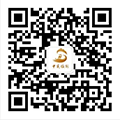China boasts one of the world’s most extensive and efficient transportation networks, making it easy for travelers to explore everything from bustling megacities to remote mountain villages. This guide covers all the key transport options—high-speed trains, domestic flights, metros, taxis, buses, and more—along with essential tips for navigating China like a pro.
1. High-Speed Trains (China’s Bullet Trains – G & D Trains)
China’s high-speed rail (HSR) network is the largest and fastest in the world, covering over 40,000 km and connecting nearly every major city.
Key Features:
- Speed: 250–350 km/h.
- Classes:
- Second Class: Affordable, comfortable, and widely available.
- First Class: Wider seats, more legroom.
- Business Class: Reclining seats, premium service (best for long trips).
- Popular Routes:
- Beijing → Shanghai (4.5 hrs, 1,318 km)
- Shanghai → Xi’an (6 hrs, 1,500 km)
- Guangzhou → Shenzhen (30 mins, 140 km)
How to Book:
- Online: Use Trip.com or 12306.cn (requires a Chinese bank card; foreigners can book via Trip.com).
- At Stations: Foreign passport holders must pick up tickets at the counter (bring passport!).
- E-Tickets: Scan QR code at gates (no paper ticket needed).
Tips:
✔ Arrive 30–45 mins early for security checks.
✔ Bring snacks (food on trains is limited).
✔ Download MetroMan or China Train Guide for schedules.
2. Domestic Flights (Fast but Less Scenic)
China has over 200 airports, making air travel efficient for long distances.
Major Airlines:
- Air China (flag carrier)
- China Eastern & Southern (budget-friendly)
- Hainan Airlines (best service)
- Sichuan Airlines(safe and security)
Booking Tips:
- Use Ctrip (Trip.com), Skyscanner, or Qunar for deals.
- Check baggage limits (usually 23kg for economy).
- Arrive 2 hrs early for domestic flights (strict security).
Best for:
✈ Beijing → Chengdu (2.5 hrs vs. 10+ hrs by train)
✈ Shanghai → Lhasa (Tibet, 5 hrs vs. 2+ days by train)
3. Subway & Metro Systems (Best for Cities)
China’s metro systems are clean, cheap, and efficient—ideal for avoiding traffic.
Top City Metro Networks:
- Beijing Subway (World’s busiest, 27 lines)
- Shanghai Metro (Longest in the world, 20 lines)
- Guangzhou Metro (Best for English signage)
How to Use:
- Buy single-ride tickets or use transport cards (e.g., Yikatong in Beijing, Shanghai Public Transport Card).
- Mobile Payment: Link Alipay/WeChat Pay to metro QR codes (available in most cities).
Tips:
✔ Avoid rush hours (7:30–9:30 AM & 5–7 PM)—trains get packed!
✔ Google Maps doesn’t work—use Baidu Maps or Amap.
4. Taxis & Ride-Hailing (Convenient but Watch for Scams)
Taxis:
- Flag-down fare: ¥10–15 for first 3 km.
- Hailing: Use Didi (China’s Uber) or wave one down.
- Night rates: 20–30% extra after 11 PM.
Didi Chuxing (Ride-Hailing App)
- Works like Uber—enter destination in English or Chinese.
- Payment: Links to WeChat Pay/Alipay.
Avoid Scams:
✖Refuse unmetered rides (always insist on the meter).
✖Have your destination written in Chinese (many drivers don’t speak English).
5. Long-Distance Buses (Cheap but Slow)
Useful for remote areas without train access (e.g., rural Yunnan, Guizhou).
Types:
- Express buses (air-conditioned, faster).
- Overnight sleeper buses (for ultra-long trips).
Where to Book:
- Bus stations (bring passport).
- Online: Ctrip, Qunar.
Tips:
✔ Bring motion sickness pills (mountain roads can be winding).
✔ Avoid holiday periods (buses get overcrowded).
6. Ferries & Boats (Scenic Water Travel)
- Yangtze River Cruises (Chongqing → Yichang, 4 days).
- Hong Kong ↔ Macao ↔ Shenzhen (high-speed ferries).
- West Lake (Hangzhou) & Li River (Guilin) for short scenic trips.
7. Bike & E-Scooter Rentals (Eco-Friendly City Travel)
- Mobike & HelloBike (dockless bike-sharing, scan via WeChat).
- E-scooters (popular in southern cities like Shenzhen).
Rules:
Helmets required in some cities.
No riding on sidewalks (fines apply).
Final Tips for Getting Around China
✔ Download offline maps (Baidu Maps/Amap).
✔ Carry cash (some buses/taxis don’t take mobile pay).
✔ Get a VPN before arrival (Google, WhatsApp, etc. are blocked).
✔ Learn basic Mandarin phrases (e.g., "Xie xie" = "Thank you").




































